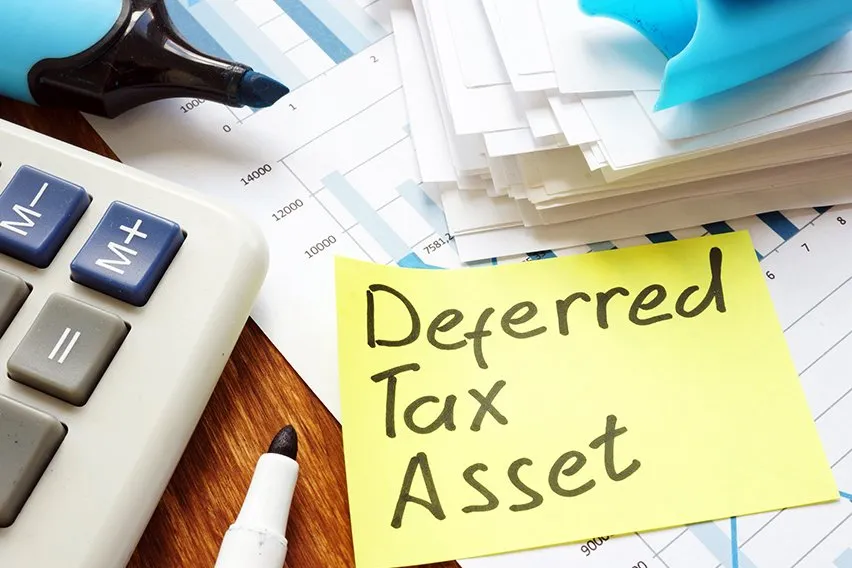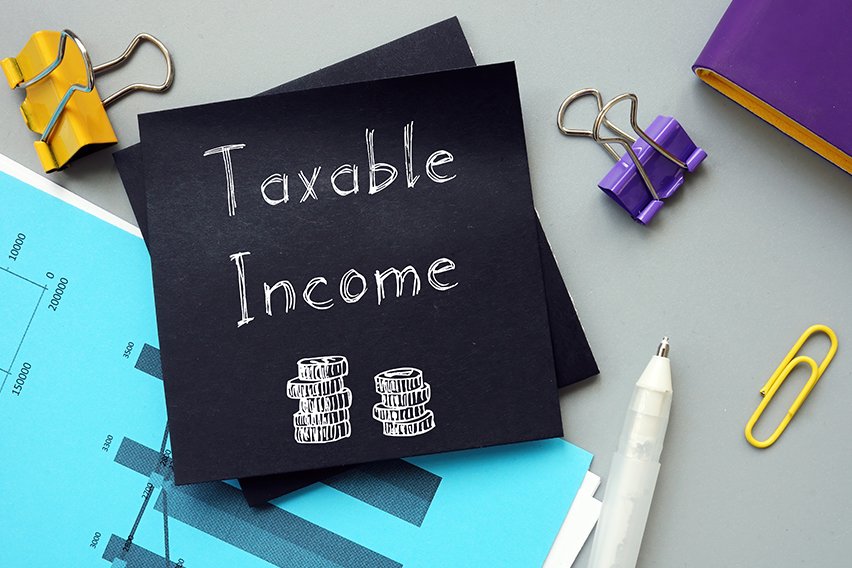What Is Deferred Tax?

Whether you intend on starting a new business or have started earning, it is important to understand taxes and the deadlines. This means that you have to understand the period your tax return covers.
Taxes are mandatory, and they are among the big dates on the calendar. They are as important as registering your business.
In this article, we’ll cover what deferred tax is, how it works, and how it impacts your assets and liabilities.
Here’s What We’ll Cover:
What Is Deferred Tax Liability?
How Do You Measure Deferred Tax Assets and Liabilities?
The Effects of a Deferred Tax Handling
What Is Deferred Tax?
A deferred tax measures corporate income taxation as a notional asset or liability. It does so in a manner that is more or less equal to that of the recognition of profits and tax treatment.
Deferred tax assets and liabilities add a layer of complexity to tax accounting.
There are significant differences between the two. Below is a detailed explanation of the two and how they work.

What Is a Deferred Tax Asset?
A deferred tax asset is an asset recorded on the balance sheet as the difference between an internal accounting balance and taxes owed. In cases where your company pays its taxes in full but still gets a tax deduction, that unused deduction is deferred to future tax filings.
In 2017, congress passed the Tax Cuts and Jobs Act, reducing the corporate tax rate from 35% to 21%. In that year, a business would have overpaid by 14% if it had paid its taxes in advance. Deferred tax assets result from this difference between tax payments and liabilities. Below are a few things you should know about deferred tax assets.
- A deferred tax asset is an intangible asset because it’s not a physical object. It only exists on the balance sheet.
- A deferred tax asset is a financial asset since it represents a tax overpayment that can be redeemed in the future.
- They are “non-current assets.”
- Whenever it’s most convenient for the business.
How Do Deferred Tax Assets Arise?
When there is a difference between the income in the company’s accounting records and the tax income on the tax return, it results in a deferred tax. To make sure your records are in good shape, you should be using accounting software. A great accounting software option will remove issues that may result in differences between income and records.
There can also be a deferred tax liability when assets and liabilities are valued differently from their tax basis. In this case, the reversal of the difference results in a future tax benefit. The accounting model you use for your business can sometimes result in deferred tax assets. They can arise when revenue is recognized as income but isn’t taxable or when the accounting period does not match the tax period.
How Do Deferred Tax Assets Work?
Case scenario, assume you used a rideshare service for $60, but the car got a flat tire, and you had to walk the rest of the distance. You receive a refund. You can now budget that your ridesharing costs the next month will be $0 since the credit you have will offset those costs.
The credit in this case represents your deferred tax asset. Even though you haven’t used it, you know that it has value in the future. Here are some examples of deferred tax assets:
- The business suffered a financial loss during that period.
- You overpaid your taxes.
- Expenses were recognized using one method of accounting but not another.
- Revenue was collected in one accounting period but recognized in a different.
- Unpaid debt is reported as revenue before it is written off as uncollectible. When the unpaid receivable is recognized, it becomes a deferred tax asset.
Let’s look at an example of deferred tax assets calculation:
Manufacturers estimate that 2% of their computers will require warranty repairs in the next year. Based on $3,000 of revenue in year one and 2% of that amount (or $60), the company would have taxable income of $2,940.
Tax authorities usually do not allow companies to deduct expenses based on expected warranties. As a result, the company must pay taxes on the full $3,000.
Taxes are payable in the income statement based on a 30% tax rate. So, if the company owes taxes to the tax authorities, the difference of $18 ($60 x 30%) is a deferred tax asset.
When it is unlikely that a business will be able to recover the full value of a deferred tax asset, deferred tax asset valuation allowances are used. Here is how these allowances are calculated:
- Analyze the differences between GAAP (Generally Accepted Accounting Principles) and tax balance sheets. This is done with implications for future taxation in mind.
- Determining whether a deferred tax asset or liability exists. This is done by comparing future taxable amounts to future deductible amounts.
- Calculate the tax rate. If the difference is expected to reverse, the rate to use is the enacted rate.
- Using the rate from Step 3, determine the deferred tax assets.
- Determine whether a valuation allowance is necessary. Generally, ASC 740 requires a valuation allowance if the assets are likely to not be fully recoverable (a greater than 50% chance).
Tax expense is used to record any increases or decreases in valuation allowances in the following period. The same can be said of any of the other categories listed above.
Do Deferred Tax Assets Carry Forward?
Yes, they do. As of the beginning of 2018, taxpayers have been able to carry forward their deferred tax assets for an indefinite period of time. Deferred tax assets, however, can always be carried forward to future tax filings, but cannot be applied to past tax filings.
What Is Deferred Tax Liability?
Deferred tax liabilities (DTLs) represent tax payments. These payments are present on a companies’ balance sheets. They may not have to make them until they file future tax returns. They can also be defined as the income taxes payable in future periods. In a payroll tax holiday, businesses can put off paying their payroll taxes until a later date. The tax holiday presents a financial benefit to the company today, but it will cause a future liability for the company.
Some tax incentives result in a deferred tax liability journal entry. This gives the company some temporary tax relief, which will be collected later. The annual devaluation of the company’s fleet of vehicles is a common source of deferred tax liabilities. Here are a few things to note.
- Tax liability deferrals represent tax payments that can be delayed. This is due to differences in accounting processes.
- They are listed as “non-current liabilities.”
- Depending on your situation, deferred tax liabilities can be neutral or beneficial. This means you owe money but don’t have to pay immediately. A downside to this is that you’ll need money set aside for the future to repay these debts.
What Causes a Deferred Tax Liability?
In the current accounting cycle, a deferred tax liability may arise. This happens whenever there is a temporary difference between the amount owed in taxes and the amount that must be paid. There are permanent differences when there is a discrepancy between pre-tax book income and taxable income. These appear under tax returns and taxes.
How Do Deferred Tax Liabilities Work?
To illustrate the concept of deferred tax liability, imagine you’re at a bar with an open tab. You go to pay your bill, but unfortunately, the bar is closed meaning you cannot process your tab. You agree to make your payment on your next visit to the bar. You make a note of the outstanding balance and have cash on hand to pay it off.
The bartender’s understanding that you will not pay the bill until the next time is an example of deferred tax liability. It is necessary to pay a company’s tax balance, but it will not be paid until some time into the future.
Here are some examples of deferred tax liabilities.
- A difference between the balance sheet value of the company and its value for tax purposes is a result of the advanced asset depreciation model. This is the most common example of deferred tax liability.
- The company failed to pay enough taxes in the previous cycle, and it must make up for it in the next cycle.
- In the case of installment sales, the company reports the full value of the sale on its balance sheet but only pays taxes for each installment. As a result of that sale, the company has deferred tax liabilities related to future payments.

How Do You Measure Deferred Tax Assets and Liabilities?
Measurement of deferred tax assets and liabilities is based on the enacted tax rates expected to apply in future periods. These future periods are when the deferred tax items are expected to become realized.
The deferred tax liability is recognized when timing differences between GAAP and tax reporting exist. This leads to lower income tax paid in the current period, and a higher income tax to be paid in future periods.
The Effects of a Deferred Tax Handling
It is also critical to analyze and forecast the impact this will have on future operations. Deferred tax assets and liabilities, for example, may have a significant effect on cash flow. The increase in deferred tax liability or the decrease in deferred tax assets is a cash source. A decrease in liability or an increase in deferred assets is also a use of cash.
Determining the future trend of deferred tax balances can also be done by analyzing changes in deferred tax balances. What are the chances that the balances will continue to increase, or will they reverse in the near future?
Please note that to avoid tax filing errors related to this topic, use reliable accounting software. Also, plan to discuss any deferred tax balances with a tax professional.
Key Takeaways
When you have a greater understanding of your taxes, you have greater control over your financial freedom. This refers to business finances, as well as personal finances. Understanding deferred tax, and getting assistance with it, can help you achieve greater successes. If you want to find more articles like this, be sure to check out our resource hub! We have plenty more just like it.
RELATED ARTICLES

 What Is GST (Goods & Service Tax): An Overview
What Is GST (Goods & Service Tax): An Overview What Is Single Touch Payroll (STP) & How It Works?
What Is Single Touch Payroll (STP) & How It Works? What Is a BAS Statement? A GST Guide
What Is a BAS Statement? A GST Guide What Expenses Can Be Claim on Tax Deductions Without Receipts?
What Expenses Can Be Claim on Tax Deductions Without Receipts? What Is Taxable Payments Annual Report (TPAR)?
What Is Taxable Payments Annual Report (TPAR)? How to Apply for an ABN (Australian Business Number): A Guide
How to Apply for an ABN (Australian Business Number): A Guide